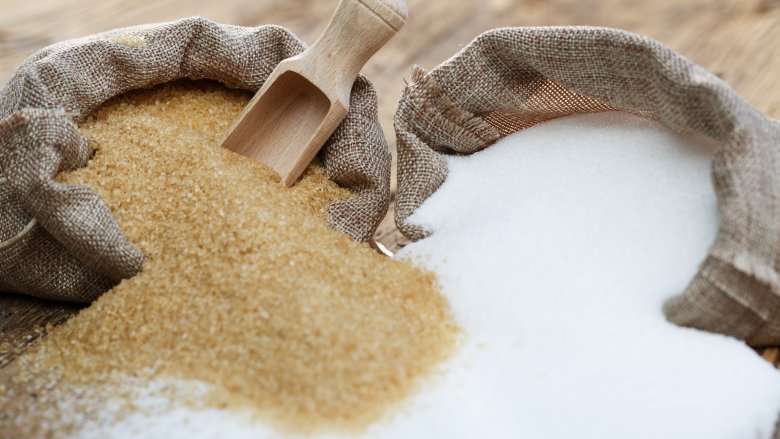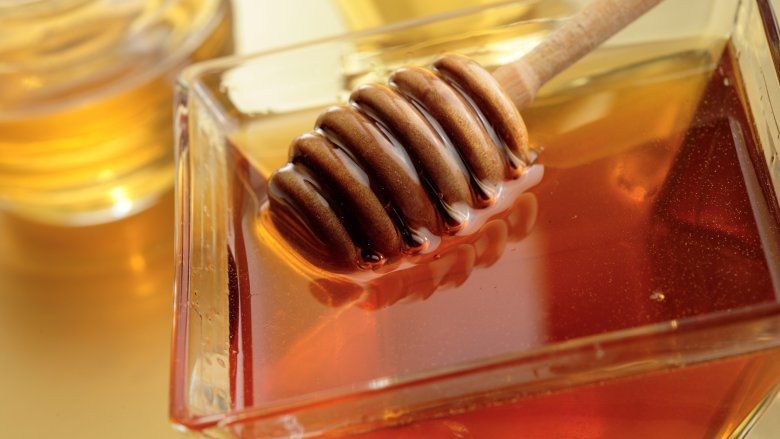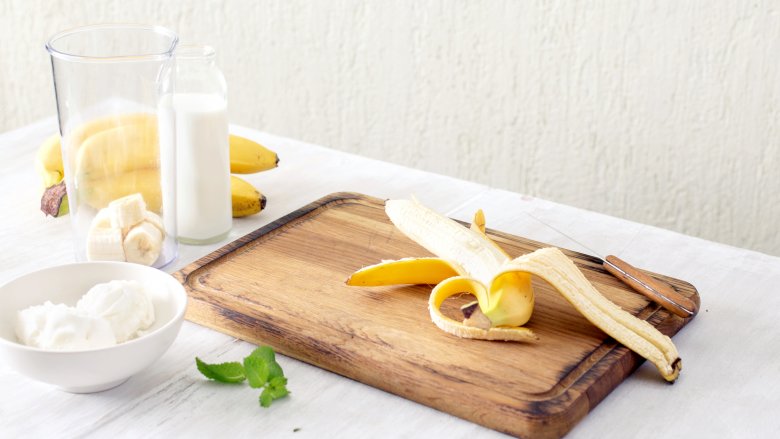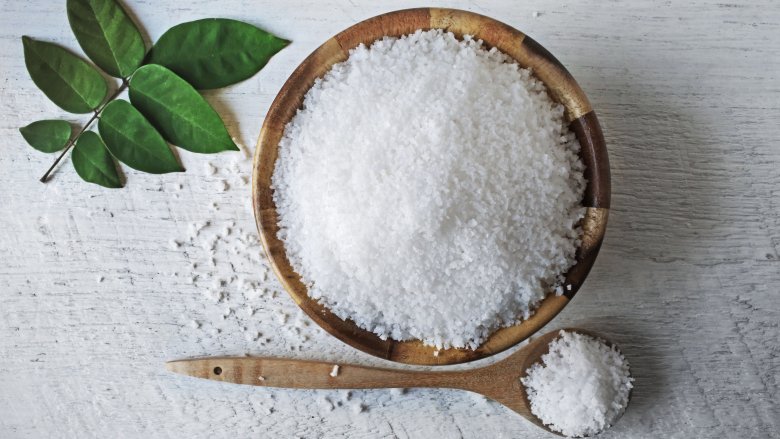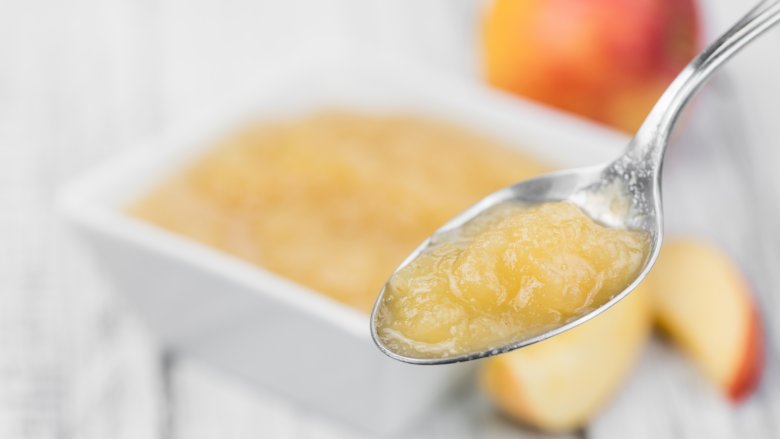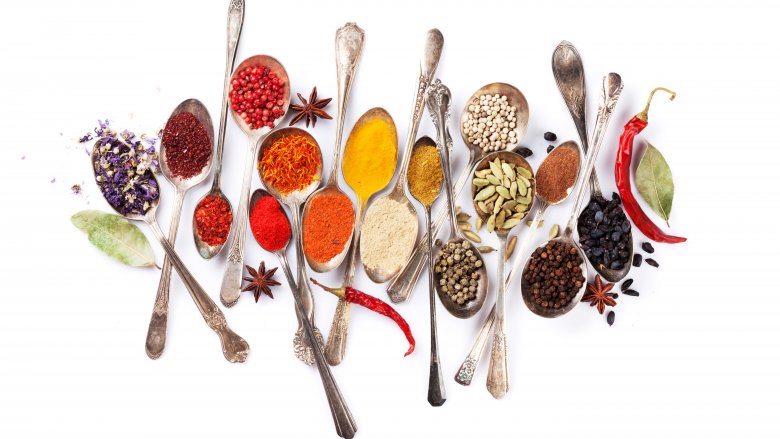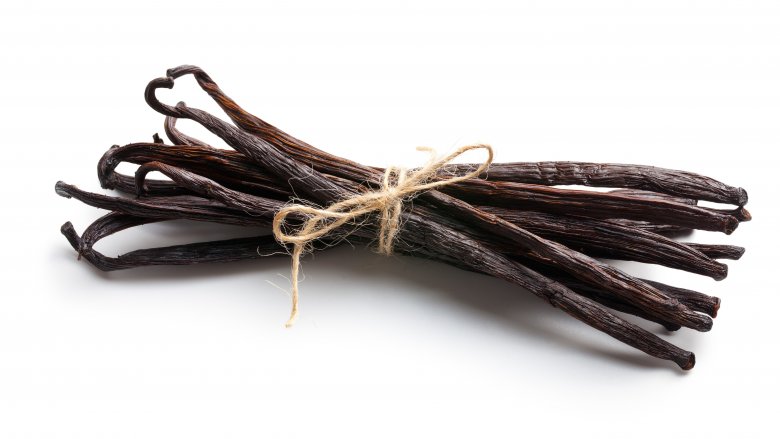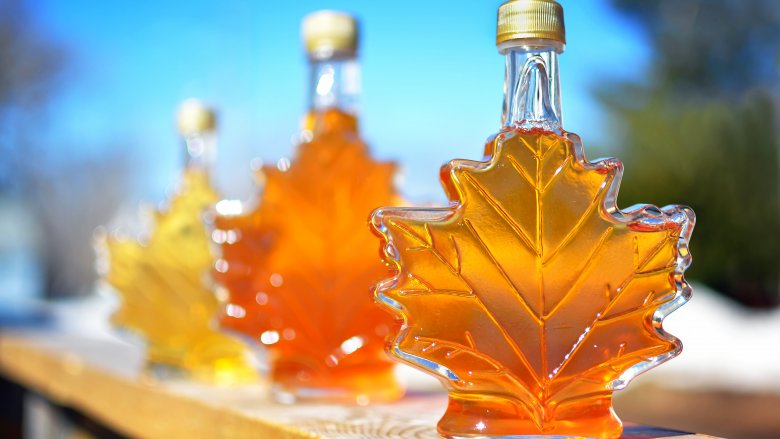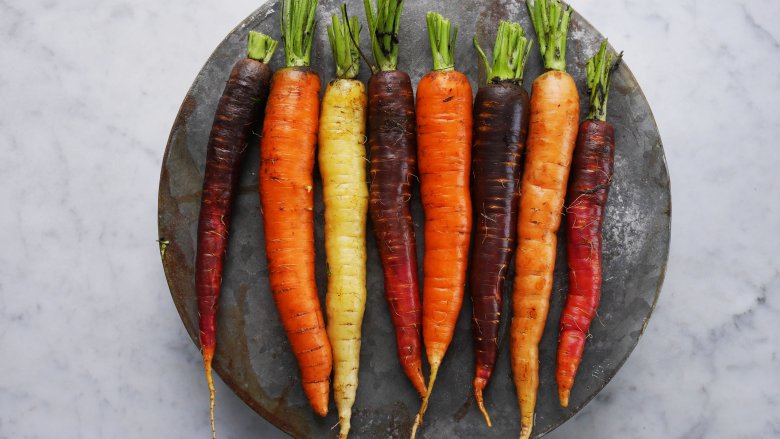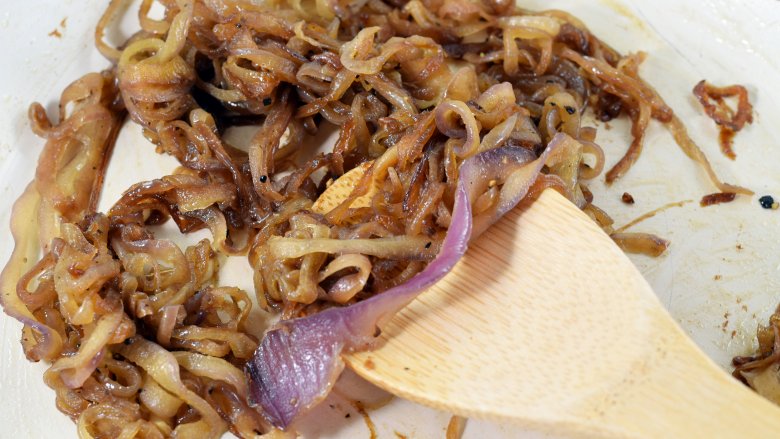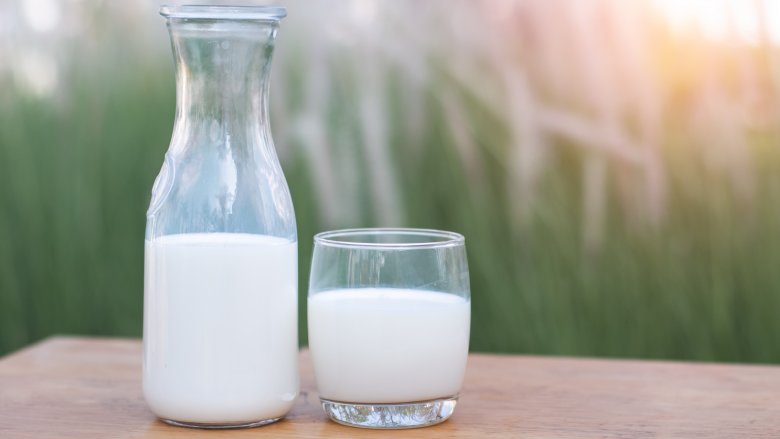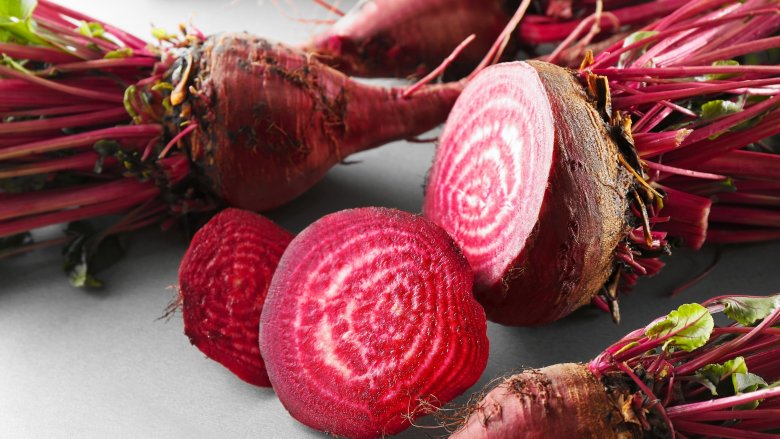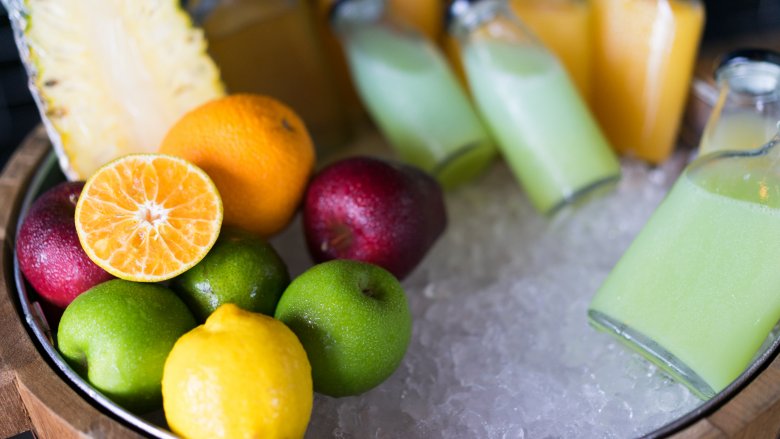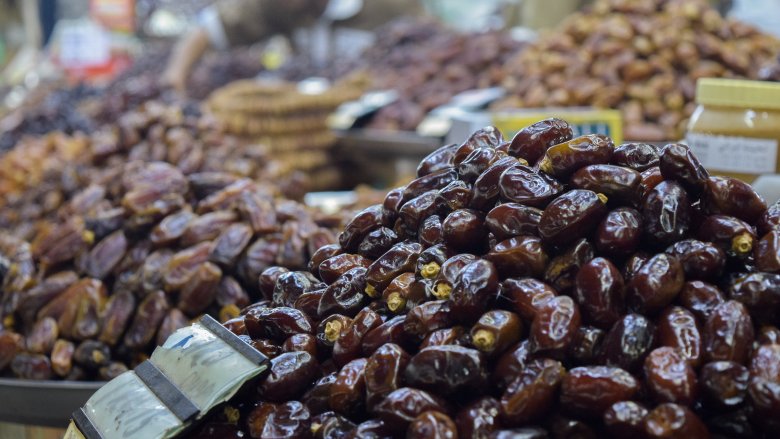Ways To Add Sweetness Without Sugar
If you're among the many health-conscious eaters that are actively trying to avoid added sugars in your foods, you may be running out of ways to satisfy that craving for a little something sweet without turning to the sugar bowl. Lucky for you, there are loads of ways to add some sweetness to your meals and snacks using sources of natural sugar, instead of the added sugars we all have been told to avoid.
Some of the choices may be fairly obvious foods that you've always known were sweet to the taste, but you may not know all of the clever ways you can be using them. Others may be foods and spices that you never even knew would help someone with a sweet tooth to kick the sugar habit. Think you can guess all the smart ways to add sweetness without adding extra sugar? Read on to find out.
Honey
Prized since ancient times as food and medicine, honey may be the first ingredient that comes to mind when you're trying to think of ways to sweeten your dishes without the use of traditional table sugar. Rich in natural sugars, honey is also jam packed with vitamins, minerals, and amino acids — meaning you can feel pretty good about adding it to your family's meals.
Honey is thick and viscous at room temperature, so the easiest way to incorporate it into a dish is to add it to heat, allowing it to melt down into your preparation. When using honey in salad dressing or sauces, try drizzling the honey slowly into a blender or food processor, along with your other ingredients. Blend the mixture up until you no longer see those tell-tale, amber colored droplets.
Honey is sweeter than table sugar. If subbing honey out for sugar in a recipe, use a half cup to ¾ a cup of honey for every cup of sugar in the original recipe. Baked recipes will also benefit from the addition of baking soda, and a reduction in cooking temperature.
Banana
Loaded with potassium, vitamin C, and fiber, bananas are a super versatile, and economical fruit that are a smart choice for always keeping stocked in your kitchen.
Bananas pack plenty of natural sweetness that will help you to sweeten up your life without added table sugar. You're probably already adding them to your morning smoothies, or slicing them on top of your favorite breakfast cereal. But your bananas can do even more for you, giving you a healthy dose of sweetness in plenty of baked goods.
If using bananas when cooking, remember that bananas are sweetest when ripe, or even overripe. If your bananas aren't ripe enough — never fear. Simply place the bananas (with the peel on) onto a baking sheet in an oven heated to 300 degrees Fahrenheit, and watch until they turn brown, or even black. Cool them slightly, and add the sweet insides to pancake batter, muffins, bread dough, or cookies. Store the banana flesh in a storage bag in your freezer, so you always have some on hand. For a healthy sweet treat, blend those frozen bananas until smooth for an all-natural, faux ice cream.
Salt
Salt for sweetness? But salt is... salty... right?
Have you ever noticed that every dessert recipe you have ever made, whether it be cookies, or brownies, or your Aunt Carol's killer carrot cake, all call for a pinch or so of salt? That's because salt brings out the sweetness in foods, while reducing their tartness. Want to sweeten up a slightly tart half of grapefruit? Or sliced apples, watermelon... even a cup of coffee? Try a light little sprinkle of salt instead of sugar. The salt will enhance the natural sweetness in the food, while cutting down on its bitterness. And it will save you from adding sugar into parts of your day where you just don't need it. Keep some fancy salts around like flaked salt or smoked salt to impress your friends. Make it some Himalayan pink salt, and you can gift your bod with trace minerals like potassium, magnesium, and zinc. Yay, salt!
Unsweetened applesauce
Applesauce isn't just for kids. This affordable, easy to use kitchen staple may be just the ingredient you're seeking to give your recipes a sweet and healthy boost without adding heaps of table sugar.
Try stirring a spoonful of unsweetened applesauce into your oatmeal or plain yogurt for a subtly sweet way to start your day. Spread a thin layer onto a roast turkey or chicken sandwich, along with crushed nuts, for a surprisingly sweet and savory flavor that will elevate your typical weekday lunch. Top pancakes or waffles with applesauce and yogurt for a leisurely, but healthy, weekend brunch.
And of course, unsweetened applesauce can be used in baking. To substitute applesauce for sugar in baked goods, you may need to do a little bit of experimenting to find the perfect ratio. A good rule of thumb is to sub out the unsweetened applesauce cup for cup with sugar, but omit some of the other liquid in the recipe to compensate for applesauce's water content. Even if you only sub out part of the sugar in your recipe, you'll be saving yourself lots of calories and giving your recipe a jolt of apple's healthy antioxidants and fiber.
Cinnamon (and other spices!)
There are lots of flavor profiles used to classify and describe spices. Some profiles are obvious, like bitter, sour, or floral, while others are a tad more mysterious, like sulfury, or woody. But you may be interested to learn that there are a huge amount of spices that are considered sweet.
Cinnamon is one of the first on the sweet spice list, but there are so many more. The list includes other spices like nutmeg, allspice, star anise, fennel, and green cardamom, to name a few. These spices allow your tongue to more readily detect the natural sweetness already found in the food that you're eating. So go ahead and spice up your coffee, your cereals, your yogurt, or any other food you would normally want to sweeten. Not only will incorporating more spices into your foods save you on added sugars, you'll also get the health benefits each spice offers like essential oils, minerals, and antioxidants.
Vanilla
Did you know that vanilla seed pods come from orchids? It's true — they come from the only edible variety of the entire orchid family. Vanilla is also naturally sweet, fragrant, and a delicious way to sweeten a huge variety of foods.
When purchasing vanilla, you could buy the actual pods, and scrape out the sticky insides. You can also buy vanilla extract or vanilla powder — just make sure you aren't buying a vanilla extract or powder that has any added sugars. Most vanilla extracts are a tincture of vanilla and alcohol, but you can find some alcohol-free ones that are in glycerin. Vanilla powder is pure vanilla that has been ground into a powder which dissolves well in hot beverages, so is perfect for your next cup of coffee or tea.
Vanilla lends itself to sweet and savory dishes alike. Add it to baked goods like cakes and cookies, and sneak it into savory dishes like risotto, lentil soup, roasted veggies, or cream-based pasta sauces. Vanilla is a must for breakfast-time overnight oats, or as a flavor boost for your favorite nut milks.
Pure maple syrup
Pure maple syrup should not to be confused with the maple "flavored" syrups you find at your local grocery store, or on the table of your nearest diner. Those syrups are much cheaper than the pure stuff for a reason — they're mainly corn syrup, and are seriously lacking all the healthy benefits of pure maple syrup like its abundance of minerals and polyphenols that do our bodies good.
Maple syrup is a natural in oatmeal, yogurt, smoothies, and even coffee. It pairs surprisingly well with savory items like bacon and breakfast sausage. Use it to give a touch of sweetness and unmistakable flavor to a glaze for roasted salmon or chicken. Coat root vegetables like Brussels sprouts or butternut squash with maple syrup whisked with olive oil and seasoning, then pop the veggies in the oven for a caramelized treat. Add maple syrup to salad dressing for a sweet and tangy maple vinaigrette.
To substitute maple syrup for sugar when baking, use ¾ cup of maple syrup for every cup of sugar in your recipe, and reduce the liquid by three tablespoons. Maple syrup is naturally dark in color, so prepare for your baked goods to come out darker, and even yummier, than usual.
Carrots
No, you probably aren't going to add a spoonful of pureed carrots to your morning cup of Joe, but make no mistake about it, carrots are an important culinary tool that have long been adding the needed sweetness to both sweet and savory dishes without the need for loads of table sugar.
Carrots become sweeter when they're cooked, so there's a good reason that diced carrots are integral to a classic French mirepoix of carrot, onion, and celery — the aromatic veggies combine for sweet and sharp flavors that are the perfect base for countless recipes. Carrots add the right amount of sweetness to the perfect tomato-based pasta sauce — brightening and sweetening the acidic tomatoes without the need for sugar. Shredded carrots can be successfully added to cakes, muffins, and cookies for a sweet and toothsome treat. For a healthy, sweet and savory combo, try blending steamed carrots with raw nuts and dried fruits for an interesting sandwich spread or dip.
Carrots are a great source of antioxidants, minerals, and fiber — so go ahead and add them in unexpected places to sweeten up some of your favorite dishes.
Onions
Much like carrots, onions are another root vegetable whose natural sugars develop when they are cooked. Also part of a classic French mirepoix, onions are an essential part of the base for many sauces, soups, and an endless array of recipes that build on onion's subtle sweetness.
To really maximize an onion's sweetness potential, the best thing to do is to caramelize it. Sliced onions are cooked low and slow in a saute pan with nothing more than some oil or butter, and a sprinkle of salt and pepper. Make sure to stir them regularly so they don't burn! Patience is key when caramelizing onions, but the payoff is worth it. Plan to cook them for at least 20 minutes for the blonde color that is ideal for French onion soup. Go as long as an hour for the deep browned onions that are the perfect topping for burgers, sandwiches, crostini, or any dish that that wouldn't be elevated by their sweet, umami-tinged goodness like scrambled eggs, pasta dishes, and dips.
Milk
And you thought you had been adding milk to your coffee all this time just because you like the flavor? Well... it's true, you do. And that's because milk is full of lactose, which is a natural sugar.
Back in the good old days, our grandparents might have referred to milk as "sweet milk," to distinguish it from buttermilk, a commonly enjoyed beverage. With 12 grams of natural sugar per cup, real milk in a recipe can translate to using less sugar overall in baked goods, or even sauces, soups and stews that need a sweet lift.
Just don't get confused by condensed milk, which is super sweet not because of its natural sugars, but because of it contains lots of added sugars. Since it's made up of about 40-45 percent sugar, condensed milk should only be reached for when a recipe, like candies and caramels, absolutely demands it.
Beets
Of course, beets! Naturally bursting with sweetness, beets are loaded with B vitamins, and key minerals like potassium, copper, and iron. They' are also surprisingly versatile in the kitchen, and are a perfect way to sweeten up smoothies and fresh-squeezed juice blends. Try blending some raw beet with your favorite fruits and veggies for a sweet and nutrient-packed morning pick-me-up.
What else can you make with beets? A lot! Try making a red-hued lemonade by blending diced beets with grapes and lemon juice, then combining with chilled water for a no-sugar-added refresher. Blend beets into hummus, or slice them and roast them for crunchy beet chips. Beets can also be blended into breads, cookies, and brownies for a way to perk up the health factor while significantly reducing added sugars. Anyone else craving a red velvet cake? Puree some fresh beets into your recipe and avoid using too much sugar or nasty artificial colors.
Fruit juices and purees
There is a good reason they call fruit "nature's candy."
A sweet liquid that so many of us start our day with, fruit juice, doesn't have to be limited to breakfast time. Fruit juices are a clever, easy way to sweeten some of our favorite dishes without using too much of those pesky added sugars. And fruit purees are even more of a good thing, since the fruit's fiber is still included. Try adding orange or apple juice to fresh brewed iced tea, or stir some pureed berries or pineapple into plain yogurt or oatmeal.
Juice and purees can even stand in for sugar in some baked goods. Try using a half cup of fruit puree or juice in place of one cup of sugar in your next baked recipe (remember to reduce some of the other liquids.) Fruit purees and juices can also be boiled and reduced to intensify the sweetness and flavor, then used as a syrup for cakes, muffins, and waffles.
Dates
Yes, dates are technically a fruit. But they are so incredibly versatile and miraculous as a way to sweeten all kinds of foods, that they deserve their very own mention.
Sweet and full of fiber, dates have an unmistakable, caramel-like flavor and stickiness which can be blended into cookies, candies, energy balls, and bars. Add them into smoothies, or even use dates to sweeten and thicken a vinaigrette.
Raw dates can be made into a syrup by boiling them and reducing the liquid until you have a flavorful and sweet topping for pancakes, or a dynamite glaze for a ham. Go ahead and add it your coffee too. Date syrup can sub for sugar in baking by replacing one cup of sugar with ⅔ of a cup of date syrup, and omitting some of the other liquid in the recipe.
Another way to take advantage of dates' sweet magic is by buying date sugar, which is just dates that have been dried and pulverized into sugar-like granules. Date sugar can also be subbed for sugar in baked recipes, at an easier cup-to-cup ratio.
